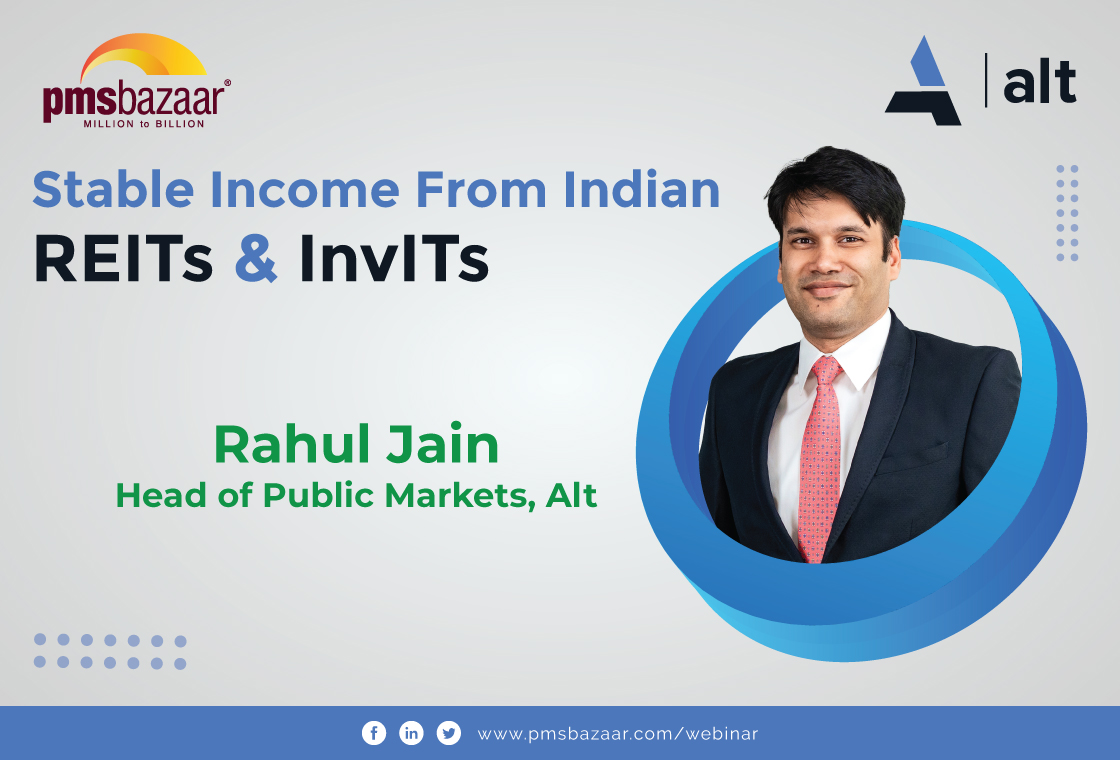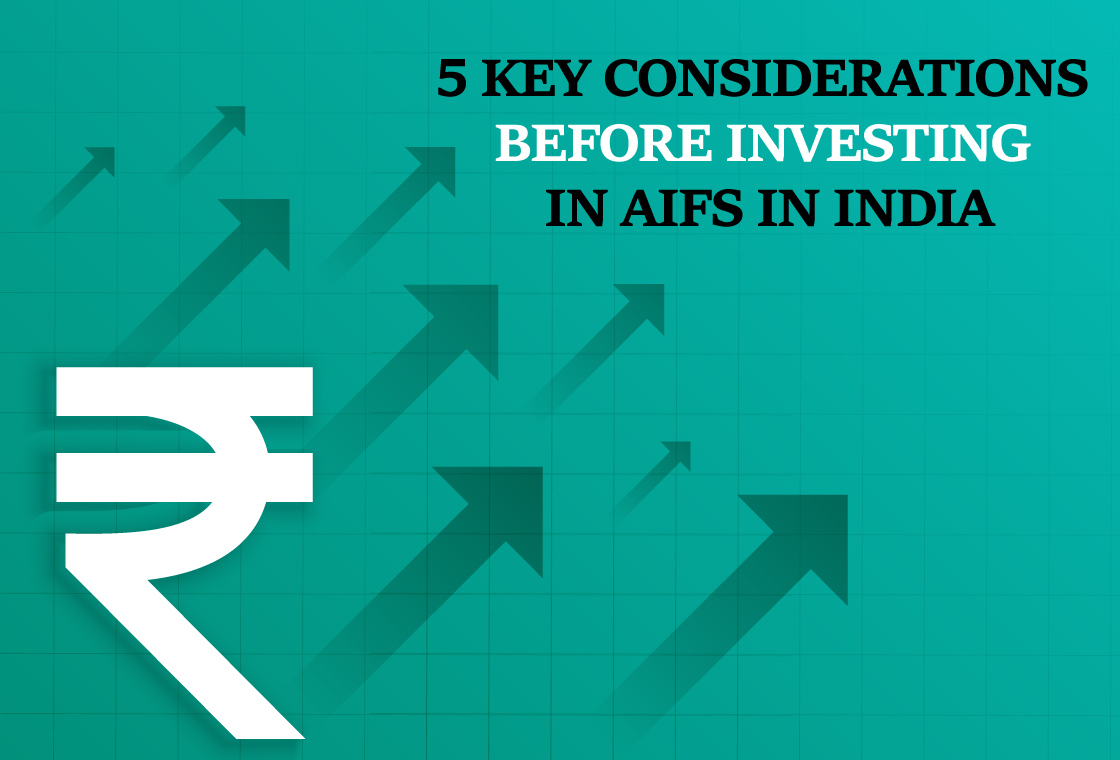PMS Bazaar recently organized a webinar titled “Sectors to watch and Sectors to Dodge” which featured Mr. Darshan Engineer, Fund Manager at Sundaram Alternate Assets and Mr. Sandeep Tulsiyan, also a Fund Manager at Sundaram Alternate Assets, who had a discussion with Mrs. Reshmi Chakraborthy from Sundaram Alternate Assets. This blog covers the important points shared in this insightful webinar.

The webinar blog covers insights from Sundaram Alternates on India’s market trends, investment strategies, and sectoral outlooks. It discusses long-term growth themes, valuation concerns, and risk factors to help investors make informed, balanced portfolio decisions.
Key aspects covered in this webinar blog are
- Contrarian Strategy: Investing Against the Tide
- Valuation Concerns Amidst Earnings Downgrades
- Structural Shift in Nifty’s Sector Composition
- Sundaram’s Three-Pillar Market Framework
- India’s Macro Stability: A Strong Foundation for Growth
- Mid and Small-Cap Earnings to Lead Future Growth
- Retail SIP Inflows Signal Robust Investor Confidence
- Emerging Market Themes in the 2020s
- Long-Term Opportunities in Capital Goods and Consumption
- Sectors to Approach with Caution: Risks and Headwinds
Summary: Sandeep Tulsiyan and Darshan Engineer of Sundaram Alternates shared insights on India’s evolving market landscape. Tulsiyan highlighted macro stability, structural shifts in the Nifty, and long-term growth in capital goods and consumption. He advocated a “buy on dips” approach despite near-term valuation concerns. Engineer emphasised changing market themes, rising financialization, healthcare, and outsourcing trends. He also flagged caution for sectors like FMCG, large private banks, and IT services, citing structural headwinds and the importance of risk management in sustaining portfolio performance.
Sandeep Tulsiyan opened by advocating a contrarian investment approach, referencing Ray Dalio's view on the pitfalls of consensus thinking. He shared how Sundaram Alternates had increased exposure during recent market uncertainties—like Trump tariffs—by identifying promising assets when sentiment was low. This strategy benefited from a subsequent sharp market recovery, with a 7% one-year return mirroring the year-to-date trend.
However, he flagged a key concern: an 8–9% downgrade in Nifty earnings estimates despite the market's 7% rise, indicating stretched valuations. FY25 began with hopes of double-digit growth but ended flat, with the Nifty trading at 22x one-year forward P/E and 19.5x two-year forward P/E—well above the long-term average of 17x.
Tulsiyan attributed this premium to a structural shift in Nifty’s composition. Traditional low P/E sectors like PSU banks and oil had made way for high-growth sectors like e-commerce, IT, insurance, and retail—naturally commanding higher multiples. Factoring this change, he proposed an adjusted long-term average P/E closer to 18–19x, which makes current valuations appear more reasonable.
He cautioned against fixating on current valuations and advocated a “buy on dips” strategy, noting that recent earnings downgrades were already priced in. He concluded by referencing Sundaram’s three-pillar framework for market analysis.
Macro Stability
Tulsiyan highlighted India's stable macroeconomic situation. He noted a gradual reduction in the fiscal deficit, aided by lower oil prices and a significant dividend from the RBI. He also pointed to inflation significantly undershooting the RBI's target, with no sharp rally expected in the next year. Lastly, he praised the central government's capital expenditure (capex), which exceeded revised estimates for FY25, with a historically high 14% of the annual target met in April of FY26.
Corporate Earnings
While acknowledging the earnings cuts already factored into large-cap earnings, Tulsiyan expressed belief in a mid-teens earnings growth for overall corporate India over the next three to five years, driven by mid and small-cap sectors. He cited RBI data on capacity utilization, running above 75% across over 900 companies, and underleveraged corporate balance sheets with a net debt-to-equity ratio at a cyclical low of 0.5x. He also anticipated an increase in consumption, particularly from urban tax cuts playing out in the latter half of the current fiscal year and rural wage growth outpacing inflation for the first time in five years.
Risk Capital Inflows
Tulsiyan pointed to the all-time high retail SIP number of nearly (27,000 crores) as a strong indicator of sustained inflows into capital markets, even amidst negative news like geopolitical skirmishes, FII sell-offs, and constant earnings cuts.
Identifying Long-Term Outperformance
Darshan Engineer highlighted the changing landscape of market themes over the decades. While the early 2000s were driven by infrastructure and capital goods, and the 2010s by consumption-led growth, the 2020s, he said, resemble a "relay race" of shorter, dynamic themes. Post-COVID, markets first favoured healthcare and staples, followed by a rise in consumer discretionary spending, and later themes like domestic manufacturing, infrastructure, and defence amid global tensions.
He noted that post-pandemic corporates have become more efficient, relying more on equity than debt. Despite near-term pressures such as high valuations and earnings downgrades, he remained optimistic about several long-term trends.
First, financialization of the economy is gaining pace. India’s financial ecosystem is expanding beyond banking into insurance, wealth management, brokerages, and niche NBFCs. Initiatives like Jan Dhan and Aadhaar have powered fintech growth.
Second, the health and wellness sector are booming, fuelled by rising demand for chronic care, specialty hospitals, and medical tourism.
Lastly, outsourcing of non-core activities is evolving beyond IT to include pharma, R&D, engineering services, and Global Captive Centres. These trends position India as a growing hub for high-value business services, driven by its skilled, young population and cost advantage.
Contrarian Investment Themes
Sandeep Tulsiyan then shared his contrarian views, focusing on specific sectors he finds promising:
Capital Goods
Despite a long period of underperformance, Tulsiyan believes the capital goods sector is now poised for growth. He cautioned against a blanket approach, emphasizing the need to identify specific subsegments. He expressed strong positivity towards the power sector, anticipating significant investments across generation, transmission, and distribution (T&D) over the next decade. He highlighted the past underinvestment in power capacity, leading to potential faster growth for existing players. He noted the current power capacity of approximately 470 gigawatts, with 50% thermal and 50% non-fossil fuel. Despite a massive increase in solar installations, the need for round-the-clock power supply means traditional thermal plants remain crucial.
He detailed three legs of investment within the power sector:
- Generation: Revival of capacity by surviving players due to past underinvestment.
- Transmission and Distribution (T&D): A significant uptick expected after a decade of underinvestment, driven by the increasing share of renewables requiring smarter grids and specialized infrastructure. He noted that typically, for every rupee spent on generation, one rupee should be spent on T&D, but the past decade's ratio has been only 0.6.
- Exports: A global de-risking of power capacity is creating opportunities for specialized equipment manufacturing companies, especially given the rising power demands from AI.
Indian Discretionary Consumption
Tulsiyan also expressed bullishness on Indian discretionary consumption, moving beyond staples. He illustrated this with the transformation of a typical Indian consumer's weekend activities, from bargain hunting to online shopping for fashion, food delivery, and short holidays, driven by:
- Increased per capita income and women's workforce participation, boosting disposable income.
- Digital access through cheap internet and robust payment systems like UPI.
He identified three pillars within this trend:
- Retail: India is the world's third-largest retail market, with over 12% penetration and 40% of spends originating from Tier 2 and Tier 3 towns.
- E-commerce: Expected to triple in size over the next seven to eight years, growing at an 18% to 20% CAGR, despite some near-term slowdowns.
- Hotels and Hospitality: Significant increases in occupancy and Average Daily Room Rates (ARRs) in Tier 1 cities due to post-COVID demand and limited new hotel capacities.
He concluded by highlighting India's Favorable demographics, with 65% of the population under 35 years of age, being internet and mobile-savvy, combined with easier access to credit and payment infrastructure like UPI, which boasts over 80 crore users. This, he suggested, will continue to fuel the digital and overall consumption story, shifting from "Kirana counters to cloud kitchens."
Reshmi Chakraborty noted the insightful discussion, particularly the consumption story, before posing her third question: which industries or sub-segments should investors currently underweight or avoid altogether, and what risks or headwinds do they foresee?
Sectors to Approach with Caution: Risks and Headwinds
Darshan Engineer emphasized that fund management involves risk management as much as identifying winners. He highlighted that avoiding large losses is crucial for portfolio resilience, as recovering from deeper drawdowns becomes exponentially harder. For instance, a 10% fall requires an 11% appreciation to break even, while a 30% fall necessitates a 43% gain.
He then outlined several areas requiring caution:
- FMCG Companies: He noted that many large FMCG companies, once dominant through general trade, now face intense competition from modern trade, e-commerce, and quick commerce platforms. This has led to single-digit growth rates for many quarters and pressure on margins as they try to regain growth. Consequently, double-digit earnings growth has become structurally challenging, making alpha generation difficult given their high valuations.
- IT Services Companies: While Indian IT services companies saw significant growth for decades, the current trend Favors smaller, digital deals where mid-cap IT firms can compete aggressively on pricing. Engineer also pointed to the rise of Generative AI as a major disruptor, forcing large IT companies to re-evaluate their business models and creating uncertainty about their growth sustainability.
- Public Sector Undertakings (PSUs): Despite government directives to focus on growth and clean up balance sheets, PSUs are often constrained by regulatory challenges, making them less dynamic than private counterparts. While select PSUs like SBI have performed well, as a theme, they generally struggle to achieve high growth rates.
- Large Private Banks: Engineer explained that large private banks face challenges in sustaining high double-digit growth due to their sheer size. Many mid-cap banks and even some private banks encounter segmental challenges, like issues with microfinance loans (e.g., IndusInd Bank, Bandhan Bank). Regulatory limitations also hinder their ability to compete equally with specialized NBFCs.
- Oil and Gas, Commodities, Metals: These sectors are highly dependent on global factors, such as the actions of the Chinese steel industry, which can put pressure on Indian counterparts. While the government is taking steps to improve competitiveness, these sectors remain susceptible to international constraints, making sustained double-digit growth structurally challenging.
Engineer clarified that these are not necessarily "uninvestable" companies but rather sectors where structural long-term investment is difficult. He added that they can offer good tactical or opportunistic trades, to which Sundaram Alternates allocates a portion of its portfolio, emphasizing the need for a margin of safety and proper timing due to their cyclical nature.
Mr. Darshan and Mr. Sandeep covered all the topics mentioned above in-depth and answered questions from the audience towards the end of the session. For more such insights on this webinar, watch the recording of this insightful session through the appended link below.
Get access to rich data and analytics of PMS & AIF by subscribing to us. Join the 75000+ investors & experts: Subscribe NOW
Recent Blogs
.jpg)
Passively Active Investing — A Modern Investor’s Lens on ETF-Based PMS
PMS Bazaar recently organized a webinar titled “Passively Active Investing — A Modern Investor’s Lens on ETF-Based PMS,” which featured Mr. Karan Bhatia, Co-Founder and Co-Fund Manager , Pricebridge Honeycomb ETF PMs. This blog covers the important points shared in this insightful webinar.

Spot the Trouble: Red Flags in Equity Investment Analysis
PMS Bazaar recently organized a webinar titled “Spot the Trouble: Red Flags in Equity Investment Analysis,” which featured Mr. Arpit Shah, Co-Founder & Director, Care Portfolio Managers. This blog covers the important points shared in this insightful webinar.

Long-Only AIFs Rebound Sharply in October; Long-Short Strategies Lag Despite Lower Volatility
106 long-only AIFs averaged 3.68% vs 32 long-short AIFs at 2.7%; only 24–31% of funds beat key indices

Markets log strongest monthly gains in 7 months; PMS performance turns near-uniform in October
Nifty 50 TRI gained 4.62%, BSE 500 TRI rose 4.27%; 415 of 427 equity PMSes ended positive

How SMEs are Shaping India’s Investment Landscape?
PMS Bazaar recently organized a webinar titled “How SMEs are Shaping India’s Investment Landscape?” which featured Mr. Shrikant Goyal, Fund Manager, GetFive Opportunity Fund.

Stable Income from Indian REITs and InvITs
PMS Bazaar recently organized a webinar titled “Stable Income from Indian REITs and InvITs,” which featured Mr. Rahul Jain, Head of Public Markets, Alt.

5 Key Considerations Before Investing in AIFs in India
Alternative Investment Funds (AIFs) have emerged as a compelling option for sophisticated investors seeking diversification and potentially superior returns. But venturing into AIFs requires a clear understanding of their unique characteristics that go beyond simply knowing what they are and their categories.

How AIF can help in diversification?
Traditionally, Indian investors have relied on a mix of stocks and bonds to build their wealth. While this approach offers diversification, it can still leave your portfolio vulnerable to market fluctuations. Enter Alternative Investment Funds (AIFs), a dynamic asset class gaining traction for its ability to unlock diversification beyond the realm of conventional options.

